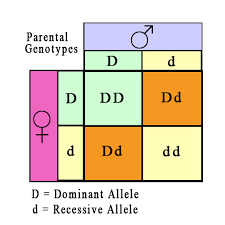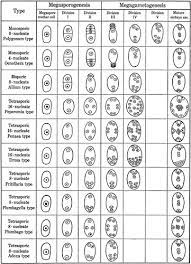Plant Movements- Definition, Types
Plant Movements
Definition:
Plants have the capacity for changing their positions in response to external or internal stimuli, which are known as plant movements. Movements are basically of two types: I. Vital movements and II. Physical movements (hygroscopic).
I. Vital movements
Vital movements are those which are exhibited by the living
cells or plants or organs and they are always related to the irritability of
the protoplasm. These movements are of two types:
A. Movements of locomotion
B. Movements of curvature
A. Movements of locomotion:
These movements include the movement of protoplasm inside
the cell or movement of whole unicellular or multicellular plant body as in
Chlamydomonas, gametes and zoospores.
i. Autonomic movements of locomotion:
The movements arising from internal changes or internal
stimuli of plant body is called autonomic movements of locomotion. This
movement takes place due to the presence of cilia or flagella and movement of
cytoplasm (Cyclosis).
ii. Paratonic or Tactic (induced) movements of locomotion:
The movements due to external factors or stimuli like light,
temperature and chemicals are called paratonic movement of locomotion.
B. Movement of curvature :
In higher plants they are restricted only to bending or
curvature of some of their parts. There are mainly two types: They are i)
Autonomic movement of curvature and ii) Paratonic movement of curvature.
i. Autonomic movements of curvature:
The movement arising from internal changes or internal
stimuli of plant body is called autonomic movement of curvature. This does not
require any external stimulus. They are two types:
a. Autonomic movement of growth:
It is of the following types:
1. Hyponasty:
When growth is more on lower surface, petals show curvature
on upper side and ultimately the flower becomes closed. Such type of movement
is called hyponasty.
2. Epinasty:
When the growth is more on upper surface, petals show
curvature on the lower side and ultimately the flower opens. Such movement is
called epinasty. The flower usually opens at high temperature and remains
closed at low temperature.
3. Nutation:
The growth of the stem apices occurs in a zig-zag manner. It
is because the two sides of the stem apex alternatively grow more. Such growth
movements are called as nutational movements. In some plants nutational
movements allow the shoots apex to grow in helical path in upward direction.
This movement is called circumnutation. It is commonly found in the stems of
climbers of Cucurbitaceae.
b. Autonomic Movement of variation:
It happens in Indian telegraph plant. (Desmodium
gyrans). The com pound leaf consists of
a larger terminal and two smaller lateral leaflets. During day time, the two
lateral leaflets move upward at an angle of 90° and come to lie parallel to the
rachis. Again, they may move downward at 180° so that they are parallel to the
rachis. They may again move upward at 90° to come in their original position.
All these movements occur with jerks after intervals, each movement being
completed in about 2 minutes.
ii. Paratonic (induces) movements of curvature:
The movement arising from external stimulus is called Paratonic (Induced) movements of curvature. They are of two types. 1) Tropic movements 2) Nastic movements
a. Tropic movements:
A movement that occurs in response to an unidirectional
stimulus is called tropic movement or tropism. There are seven types in tropic
movements (Geotropic, Phototropic, Thigmotropic, Chemotropic, Hydrotropic,
Thermotropic and Aerotropic)
1. Geotropism:
The movements which take place in response to gravity
stimulus are called geotropic movements. The primary roots growing down into
soil are positive geotropic. Primary stems that grow away from soil (against
gravity) are negative geotropic. Secondary roots growing at right angles to the
force of gravity are Diageotropic. Secondary lateral roots which grow obliquely
downwards are Plagiogeotropic. Lateral roots and branches which are not
sensitive to gravitational stimulus are Apogeotropic.
2. Phototropism:
The tropic movement taking place as a response to light
stimulus is called phototropism. Some of the plant parts such as stems,
branches, leaves and pedicels of flowers move towards the stimulus of light and
are said to be positively photo tropic while others such as roots and rhizoids
which move away from the stimulus of light are called negatively phototropic.
b. Nastic Movements:
When growth movements occur in response to an external
stimulus which is not unidirectional but diffused, they are called nastic or
paratonic movements of variation. Paratonic variation movements are determined
by some external stimuli, light, temperature, chemicals and touch. They are:
1. Nyctinastic movement (or) sleep movement:
The diurnal (change in day-night) movements of leaves and
flowers of some species which take up sleep position at night are called
nyctinastic movements. They are caused by relative changes in cell size on the
opposite sides of the leaf base called pulvinus. The movements are attributed
to the amount of auxin and K1 ions. The entry of water to the lower side of the
pulvinus causes the leaves to stand erect and exit of water causes them to
drop. They are of two types:
i. Photonasty:
The nastic movement caused in response to light is called
photonasty or photonastic movement. The opening of leaves and flowers during
daytime and their close at night is an example.
ii. Thermonasty:
The nastic movement taking place in response to temperature
is called thermonasty or thermonastic movement. In Crocus the flowers open at
high temperature and close at low temperature.
2. Seismonastic movement:
This means a response to shaking. The best example is Mimosa
pudica (Touch-me-not plant) which is a sensitive plant. Such plants respond to
stimuli such as touch, blow or metallic shock by folding their leaflets and
lowering their leaves. This effect is caused by the movement of water in and
out of the parenchymatous cells of the pulvinus.
3. Thigmonastic movement:
The movements found in the leaves of Drosera and Dionaea
(Venus fly trap) result in response to the touch stimulus of insects. As soon
as an insect sits on the leaf the cilia curve inward to trap the insect and
trigger hairs are activated. Similarly, in dionaea, the two halves of the leaf
curve upwards along the midrib. These parts of the leaves come to their normal
position after the insect has been digested.
II Physical Movement (Hygroscopic Movements):
Physical movements are those which are found in dead parts of the plants and they are not related to any irritability of the protoplasm. They are also called hygroscopic movements or mechanical movements. Dispersal of spores and seeds, dehiscence of sporangia, bursting of seeds and movement of elaters are the examples of physical or hygroscopic movement.





Comments